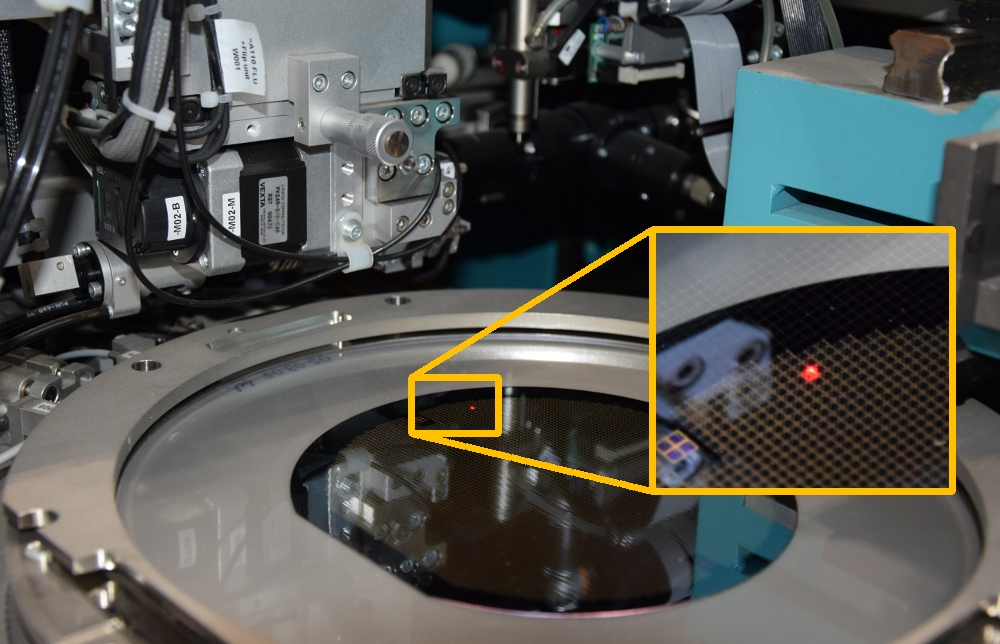In electronics industry, there is a constant demand for ever-smaller chips – combined with increasing production numbers. The challenge: the handling of small-sized components and the assembly and bonding of more components on substrates in less time. State-of-the-art mechanical assembly technologies with an assembly rate of 20,000 components per hour for components with an edge length of 150 micrometres are pushing their technical limits. The newly developed assembly technology is based on laser technology for the contactless transfer of components. The researchers are now relying on a continuous movement of wafer, containing the electronic components, and substrate to increase the assembly rate. The aim of the research consortium is to realize an assembly of electronic components with an edge length of 30 to 150 micrometres, a positioning accuracy of plus/minus ten micrometres and an assembly rate of up to 100,000 components per hour.


